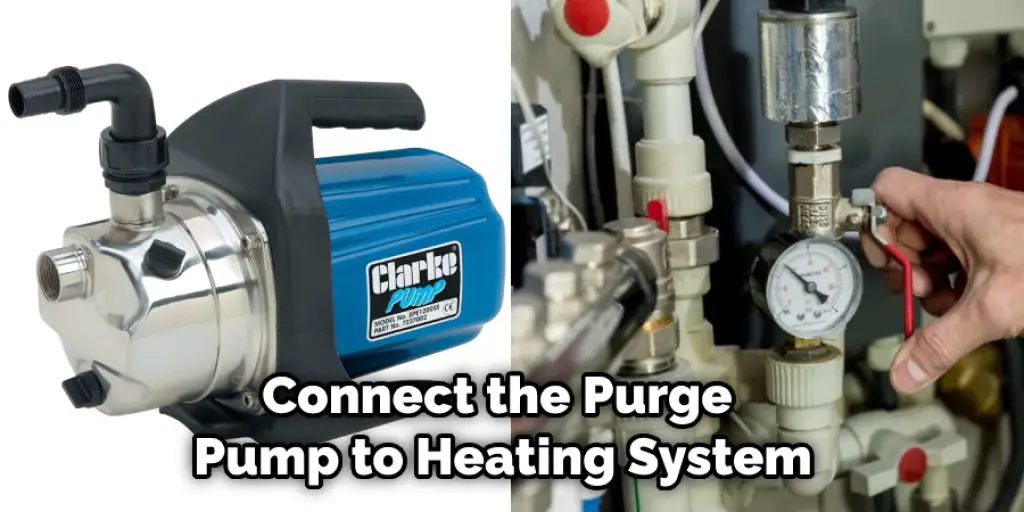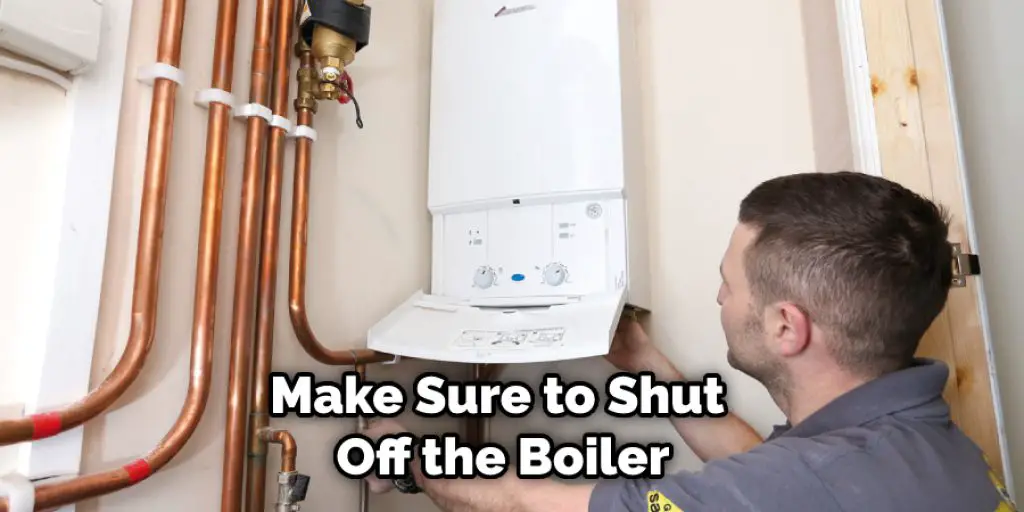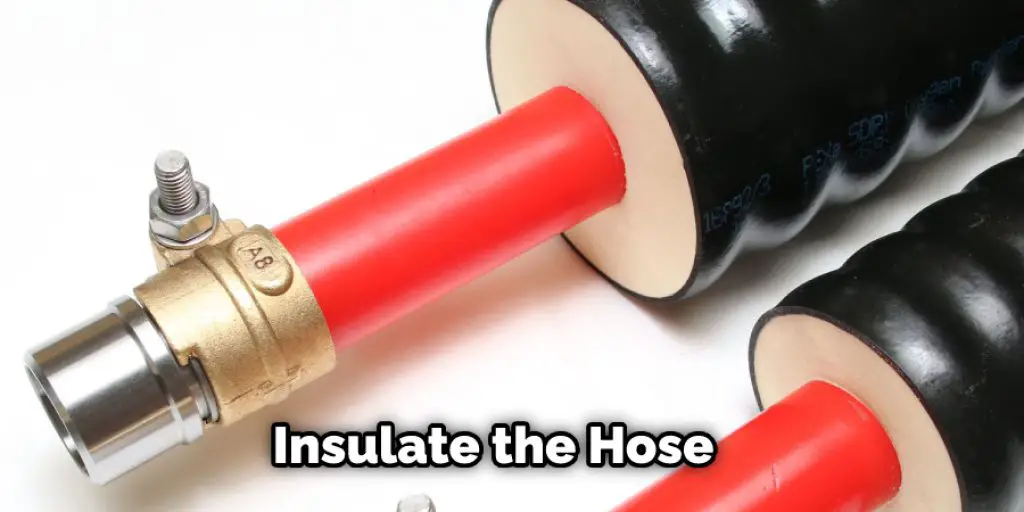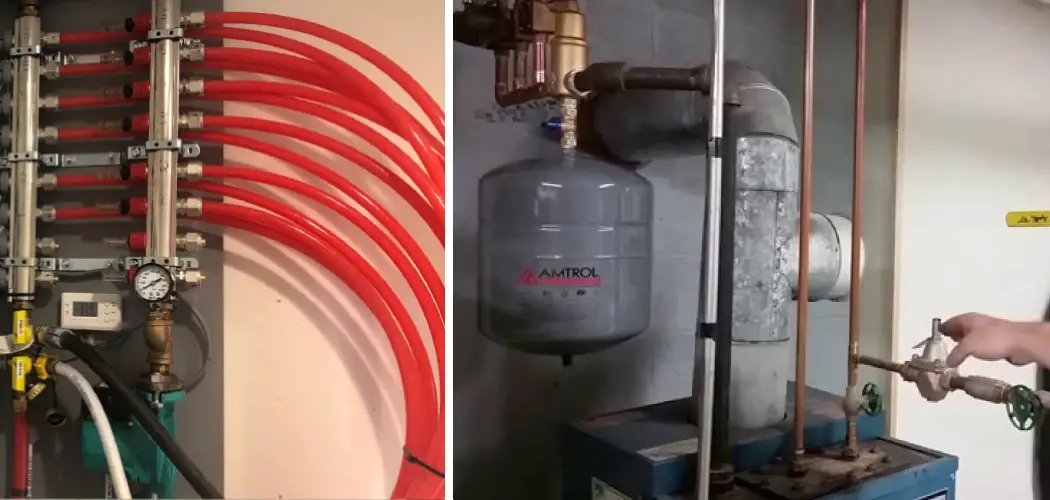No one likes a stuffy room, especially in the wintertime. And if your home is heated with a radiant heating system, you may be wondering how to purge the air out so that you can enjoy some heat without feeling suffocated. Luckily, it’s a relatively straightforward process! This article will discuss how to purge air out of a radiant heating system. Just follow these simple steps, and you’ll be on your way to a more comfortable living space.
Purge air is a term used to describe removing air from a system. In the case of radiant heating, purging the air will help to heat your home more efficiently. When there’s too much air in the system, the heat doesn’t radiate as effectively, so you’ll have to crank up the thermostat to achieve a comfortable temperature.

Reasons Why Purge Air Out of a Radiant Heating System.
Radiant heating systems work best when air is purged from the system. All air is removed, and only the heated fluid remains inside the tubes. An air pocket can form and block the heated fluid from flowing, which will reduce the efficiency of your radiant heating system. There are several reasons why you should purge air out of a radiant heating system:
- To ensure that the system is working at its maximum efficiency
- To prevent air pockets from forming and blocking the heated fluid
- To ensure that the system is properly balanced
- To prevent any damage to the tubing or other components
- To improve the overall performance of the system
- To prolong the life of your radiant heating system
It is essential to purge air out of a radiant heating system regularly to ensure that it is working at its best. A system that is not properly purged can be less efficient and may not heat the area as well as it should. Regular purging will also help prevent any problems with the system and extend its life.
A Detailed Guide on How to Purge Air Out of a Radiant Heating System
Method 1: Using a Purge Pump
The most common way to purge air from a radiant heating system is to use a purge pump. This method uses a mechanical pump to create a vacuum in the system, which sucks the air out.
Things You’ll Need:
- Purge pump
- Tubing
- Vacuum gauge
Step 1: Connect the Purge Pump to the Tubing.
The purge pump should be connected to the tubing from the radiant heating system to the boiler. Ensure that the connections are tight and secure so that there is no leakage.

Step 2: Connect the Vacuum Gauge to the Tubing.
The vacuum gauge should be connected to the same tubing as the purge pump. This will allow you to monitor the level of vacuum in the system.
Step 3: Turn on the Purge Pump.
Once everything is connected, turn on the purge pump. The pump will create a vacuum in the system, which will suck out any air bubbles.
Step 4: Monitor the Vacuum Gauge.
The vacuum gauge should be monitored while the purge pump is running. If the vacuum reaches a certain level, the air will be sucked out of the system, and the pump can be turned off.
Method 2: Bleeding the Radiators
This is the process of releasing air from the radiators through the valves at the top. It’s a slower process, but it can be more effective in clearing out all of the air from the system.
Things You’ll Need:
- Bucket
- Radiator key
- Screwdriver
Step 1: Shut Off the Boiler
Before you start, make sure to shut off the boiler. This will prevent any hot water from circulating through the system while you’re bleeding the radiators.

Step 2: Find the Radiator Valves.
Each radiator has two valves at the top – one for filling and one for bleeding. The filling valve is usually a knob, while the bleeding valve is typically a screw head.
Step 3: Open the Valves
Use your radiator key to open the valves. Be careful not to loosen them too much, as this can allow air to escape from the system faster than you want it to.
Step 4: Fill a Bucket With Water
Position a bucket under the radiator that you’re working on. This will catch any water that escapes from the system.
Step 5: Bleed the Radiator
Slowly turn the screw head on the bleeding valve until water drips from it. Keep turning the screw until water is flowing steadily from the valve. Once the water stops flowing, close the valve and move on to the next radiator.
When you’re finished, turn on the boiler and check for any leaks. If there are any leaks, fix them immediately. Leaks can cause severe damage to your heating system and are expensive to repair.
Method 2: Using a Vacuum Cleaner to Purge Air From a Radiant Heating System
If you cannot use Method 1 to purge air out of your radiant heating system, you can use a vacuum cleaner. This method is not as effective as compressed air, but it will work in a pinch.
Things You’ll Need:
- Vacuum cleaner
- Hose
- Compressed air
- Ruler or tape measure
Step 1.
Locate the bleed valve on your radiant heating system. This is usually a small brass valve located near the top of the unit. The bleed valve releases excess pressure and air from the system.
Step 2.
Attach the hose to the vacuum cleaner and insert the other end into the bleed valve.

Step 3.
Turn on the vacuum cleaner and allow it to run for 10-15 minutes.
Step 4.
Remove the hose from the bleed valve and check if any air remains in the system. If there is still air in the system, repeat Steps 2-4 until all of the air has been purged from the system.
WARNING: Never use a blow torch or other open flame to purge air from a radiant heating system. Doing so could cause a fire or explosion. Instead, always use compressed air or a vacuum cleaner to purge air from a radiant heating system.
Method 4: Purge Air Out of a Radiant Heating System with a Blower
If you have a blower, you can use it to purge the air out of your radiant heating system. This is the most common way to purge air from a radiant heating system.
Things You’ll Need:
- Blower
- Hose
- Pipe insulation
- Zip ties
Step 1: Insulate the Ends of the Hose
If you’re using a hose to purge the air out of your radiant heating system, you’ll need to insulate the ends of it. This will keep the warm air in and prevent cold air from entering the system.
Step 2: Connect the Hose to the Blower
Connect one end of the hose to the blower. Make sure that it’s securely attached to avoid coming loose.
Step 3: Connect the Other End of the Hose to Your Radiant Heating System
Connect the other end of the hose to your radiant heating system. Make sure that it’s securely attached to avoid coming loose.
Step 4: Turn on the Blower
Turn on the blower. This will create a vacuum in the hose, which will suck the air out of your radiant heating system.
Step 5: Wait until All of the Air is Purged
Wait until all of the air is purged from your radiant heating system. Once it’s gone, turn off the blower.
Step 6: Insulate the Hose

Once you’re purging the air from your radiant heating system, you’ll need to insulate the hose. This will keep the warm air in and prevent cold air from entering the system.
Step 7: Securely Attach the Hose
Ensure that the hose is securely attached to both the blower and your radiant heating system. You can use zip ties to attach it securely.
Purging the air from your radiant heating system can be a bit of a hassle, but it’s worth it. You can ensure that your system is running efficiently and effectively by following these steps. These methods will help in how to purge air out of a radiant heating system.
Precautions:
Before you purge air out of a radiant heating system, be sure to take the necessary precautions:
- Shut off the power to the system.
- Open all faucets in the house to release any pressure that may have built up.
- If there is a boiler in the system, release any pressure that may have built up by opening the pressure relief valve.
- If there is a water heater in the system, release any pressure that may have built up by opening the temperature and pressure relief valve.
- Make sure all drain valves are open.
- Purge air from one zone at a time. Never purge air from the entire system at once.
Benefits of Purging Air Out of a Radiant Heating System
A well-functioning radiant heating system is key to keeping your home warm and comfortable during the winter months. However, if the air becomes trapped in the system, it can decrease efficiency and even premature failure.
The good news is that purging the air from a radiant heating system is a quick and easy process. Here are the benefits of doing so:
- Increased Efficiency – Air can cause the radiant heating system to work harder than necessary, resulting in decreased efficiency. Purging the air out of the system allows it to function more efficiently.
- Less Noise – Air pockets can create noise within the radiant heating system, which can be annoying and disruptive. Purging the air out of the system gets rid of this noise.
- Extended System Life – The longer a radiant heating system operates without any air pockets, the longer it will last. Purging the air out of the system helps to prevent premature failure.
You Can check it Out to Fill Gaps Around Heating Pipes
Conclusion
Now that you know how to purge air out of a radiant heating system, it’s time to put this knowledge into practice. Follow the methods we outlined above, and your home will be warm and comfortable in no time!
Rick is a handyman who grew up helping his dad with his business. He learned a lot from him about how to fix things, and also about how to work hard and take care of business. These days, Rick is still into fixing things- only now, he’s doing it for a living.
Rick is always looking for new ways to help people grow and develop. That’s why he started contributing to this blog: to share all his experience and knowledge so that he can help people who are interested in DIY repair.

